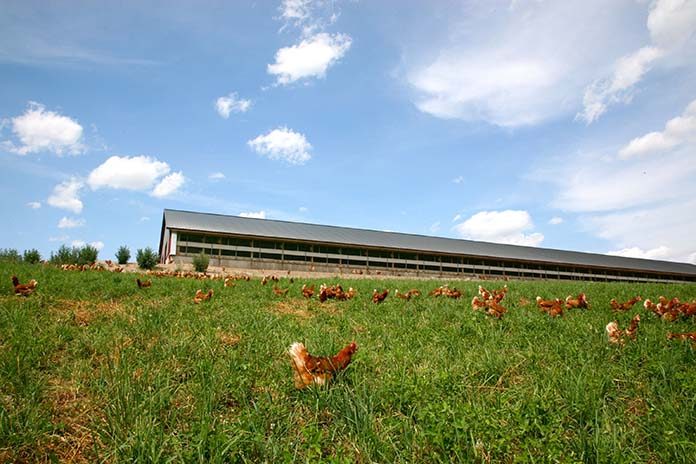
Results of a study show that breeding reduces environmental impacts of animal products by about 1% per year. This is achieved without specific selection on environmental traits, but as an indirect response through selection on the current breeding goals.
Wageningen Livestock Research performed this study on the contribution of breeding to reducing environmental impact in broilers, laying hens, pigs and dairy cattle.
Animal production plays important role in global greenhouse gas emissions
Animal production is responsible for 14.5% of total anthropogenic greenhouse gas (GHG) emissions. Approximately half of these emissions originate directly from animal production, whereas the other half comes from feed production. Animal breeding aims at improving animal production and efficient use of resources, which results in a reduction of the environmental impact. The objective of this study was to quantify the contribution of animal breeding to reducing the environmental impact of the four major livestock species in the Netherlands (with their animal product), namely broilers (meat), laying hens (eggs), pigs (meat) and dairy cattle (milk).
Breeding contributes to increasing efficiency
A literature review was performed to assess the current status of and historical trends in environmental impact, mainly focussed on GHG emissions, based on general performance criteria. Emissions related to feed production dominate impacts of broilers, laying hens and, to a minor extent, pigs. For dairy cattle, enteric methane emission is a large contributor to total GHG emissions. Historical trends show considerable improvements in efficiency over the last decades, in which breeding plays an important role. From the literature review we concluded that the contribution of breeding to reducing environmental impact of animal production is led by an indirect response through selection on increased efficiency.
Increasing efficiency leads to lower environmental impact
Next to the literature review, a quantitative assessment was made on the current environmental impact of the four animal products and the effect of recent genetic improvements. For broiler meat, chicken eggs and pig meat the focus was laid on GHG emissions and nitrogen and phosphorus efficiency, whereas for dairy the focus was laid on enteric methane emissions, an important contributor to GHG emissions. Data were partly provided by breeding organisations, partners in the Breed4Food consortium. In general, results showed that breeding reduces environmental impacts of animal products by about 1% per year.
For laying hens, white and brown hens were considered and it was concluded that white hens have a lower GHG impact and better N and P efficiency than brown hens and that improvements over the past 10 years went faster for white hens as well.
For broilers it was shown that GHG emissions decreased and N and P efficiency increased with more than 1%. However, only data of a 4-years’ timeframe under less controlled circumstances were available, which resulted in a possible overestimation of genetic progress.
New traits need to be recorded when more emphasis on environmental impacts is needed All reported results are achieved without specific selection on environmental traits, but as an indirect response of the current breeding goals for each species, which is a combination of health, growth, and (feed) efficiency.
From Wageningen University Research: www.wur.nl















